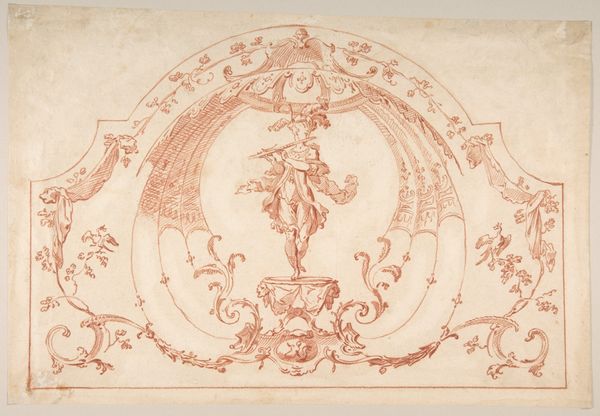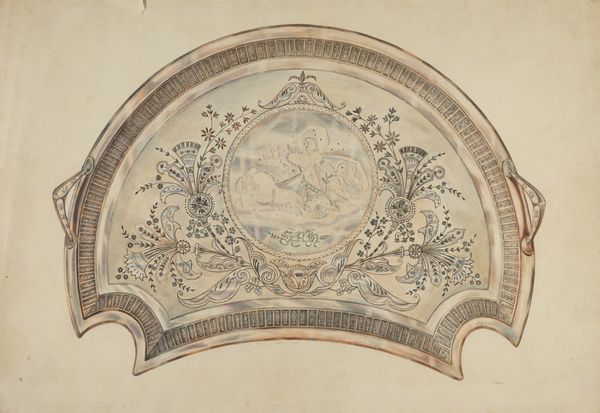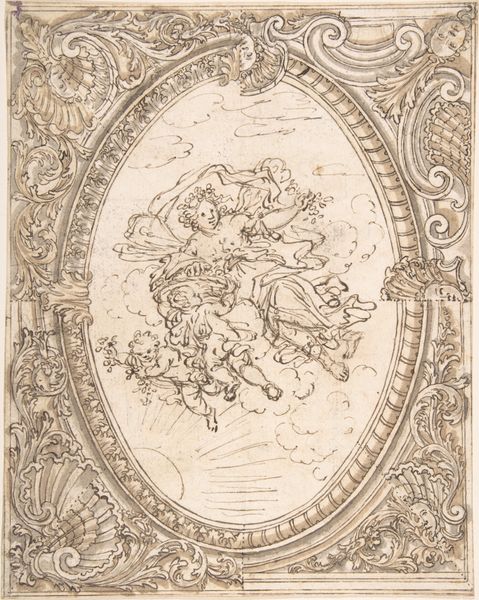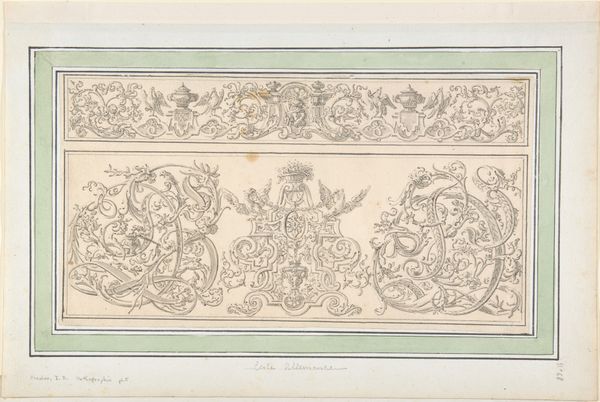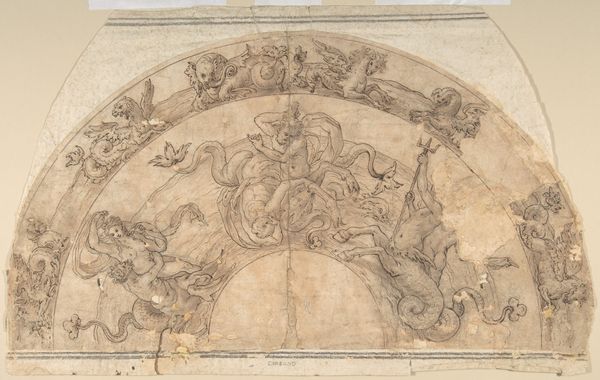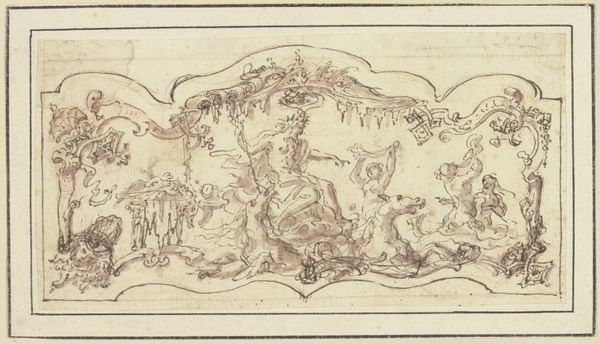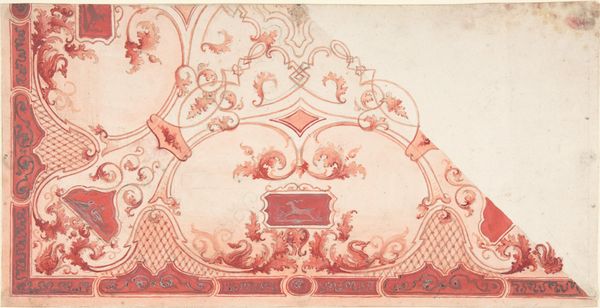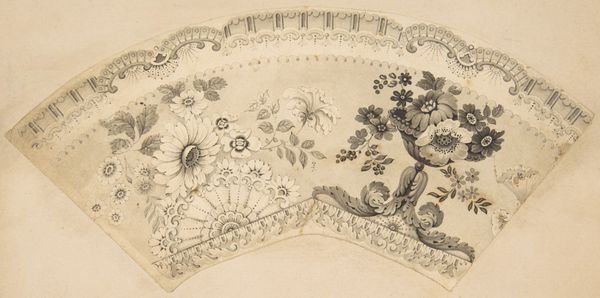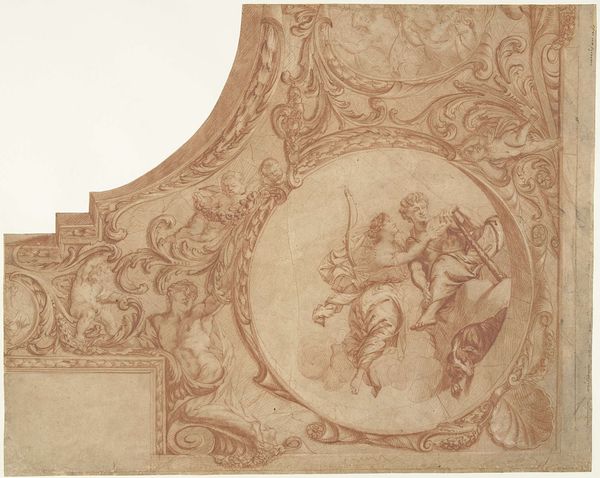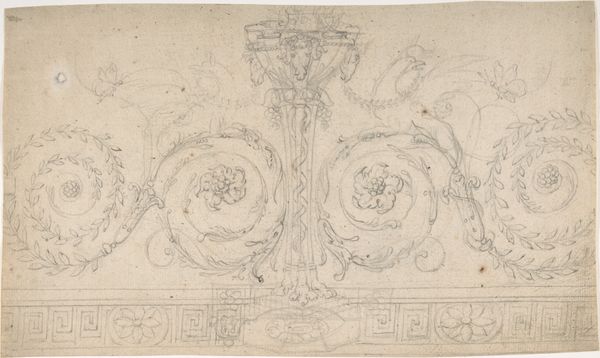
Design for a Platter with Battling Tritons and Sea Nymphs 1500 - 1583
0:00
0:00
drawing, print, ink
#
drawing
#
allegory
#
pen drawing
# print
#
pen sketch
#
figuration
#
11_renaissance
#
ink
#
decorative-art
#
italian-renaissance
Dimensions: 11 7/8 x 16 5/16 in. (30.2 x 41.5 cm)
Copyright: Public Domain
Curator: What a fascinating and turbulent image. There's so much kinetic energy. Editor: Indeed. This drawing, attributed to Erasmus Hornick and created sometime between 1500 and 1583, is titled "Design for a Platter with Battling Tritons and Sea Nymphs". It's currently held at the Metropolitan Museum of Art. Curator: "Battling" certainly captures it. The intertwined figures, part human and part sea creature, locked in this... what is it, playful combat or something darker? The pen and ink medium gives it a delicacy that contrasts with the violence depicted. I find the scene a little unsettling. Editor: Renaissance art frequently utilized mythological narratives to explore themes of power, sexuality, and social order. Look closer and consider who these figures might represent within that hierarchy. Are the Tritons and Nymphs simply decorative, or do they allegorically represent masculine aggression and feminine resistance in a patriarchal framework? What statements, intentional or not, may be revealed here about societal views on gender during the Italian Renaissance? Curator: You’ve shifted my perspective, seeing this piece not just as an object of artistic design but as a potential cultural artifact, offering insight into the attitudes of the era. However, consider the formal symmetry! The mirroring of figures across a central decorative motif creates a strong sense of balance and a rhythmic movement that pulls the eye across the composition. The drawing creates a unity, a completeness, despite the chaotic action within. Editor: A unity perhaps designed to obscure the more problematic aspects of its time, using the aesthetics of idealized beauty to deflect questions of gender roles, and potential objectification? Still, analyzing these features alongside each other reveals new interpretations. Curator: This is where close examination paired with art-historical contextualization creates deeper appreciation for the dialogue, both in form and history, this art provides. Editor: Indeed. By allowing these perspectives to intertwine, we engage in a more holistic understanding of the artwork, enabling nuanced and critical observation of the forces it embodies.
Comments
No comments
Be the first to comment and join the conversation on the ultimate creative platform.
